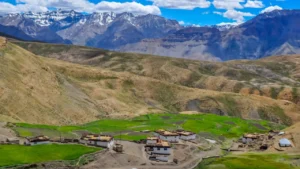Introduction
Tucked away in the northeastern part of Himachal Pradesh, Spiti Valley is not just a place — it’s an emotion. A vast, cold desert surrounded by rugged mountains, ancient monasteries, and crystal-clear skies, Spiti is a dream for adventurers, nature lovers, and spiritual seekers alike. This trip isn’t about luxury; it’s about raw beauty, silence, self-discovery, and survival.
In this blog, I’ll take you on a complete Spiti Valley trip, covering the route, important stops, experiences, tips, and that unexplainable connection you feel when you’re surrounded by the mighty Himalayas.
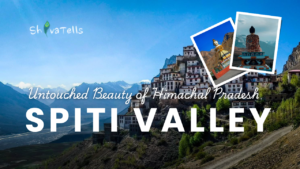
🗺️ Where is Spiti Valley?
Spiti (meaning “Middle Land”) lies between Tibet and India, hence its unique blend of Indian and Tibetan culture. The valley remains cut off for most of the winter due to heavy snowfall, making summer the perfect time to explore this magical terrain.

📅 Best Time to Visit
-
May to October: Ideal months for road trips, treks, and sightseeing.
-
Avoid winters (November–April) unless you’re a seasoned traveler with snow-driving experience — roads often close due to snow.
🚗 Route and How to Reach Spiti
There are two main routes to reach Spiti by road:
1. Shimla to Spiti Route (Open most of the year)
Route: Shimla – Narkanda – Rampur – Kalpa – Nako – Tabo – Kaza
Duration: 2 days (best split into two halts)
2. Manali to Spiti Route (Opens around June)
Route: Manali – Rohtang Pass – Kunzum Pass – Kaza
Shorter but tougher due to road conditions and altitude
📝 We chose the Shimla route for a gradual acclimatization to the altitude.
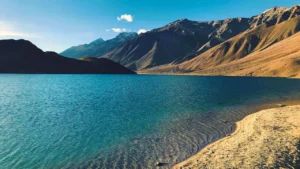
🛣️ Day-Wise Itinerary and Highlights
🏞️ Day 1: Shimla to Kalpa
We started early from Shimla. The lush pine forests slowly gave way to rocky mountains and Sutlej River views. Kalpa is a peaceful village with mesmerizing views of the Kinner Kailash range.
-
Visit: Suicide Point, Kalpa Monastery
-
Tip: Stay hydrated and avoid overexertion (altitude starts to affect here)
🏔️ Day 2: Kalpa to Nako to Tabo
The terrain became more dramatic. Landslides and narrow roads tested our patience but the scenery made up for everything. We stopped at Nako Lake, a beautiful high-altitude lake surrounded by a sleepy village.
Tabo Monastery (built in 996 AD) was our final destination for the day — often called the Ajanta of the Himalayas due to its murals.
-
Must see: Nako Lake, Tabo Monastery, prayer wheels, sunset over Tabo cliffs
🛕 Day 3: Tabo to Dhankar to Kaza
The road to Dhankar was narrow but the Dhankar Monastery, perched on a cliff edge, was breathtaking — both literally and emotionally. It overlooks the confluence of the Spiti and Pin rivers.
By afternoon, we reached Kaza, the heart of Spiti Valley and our base for the next few days.
-
Altitude: ~12,500 ft (take it easy!)
-
Things to do: Chill at cafes, visit Kaza market, talk to monks
🏞️ Exploring Spiti – What Not to Miss
Once in Kaza, there are several day trips you can take to nearby villages and monasteries:
🏯 1. Key Monastery
-
The largest and most iconic monastery in Spiti
-
Home to 300+ monks
-
You can have tea with monks, visit the library, and even stay overnight!
🏡 2. Kibber Village
-
One of the highest motorable villages
-
Gateway to snow leopard territory
-
Clear views of Kanamo Peak
🕉️ 3. Hikkim – Highest Post Office in the World
-
Send a postcard from 14,567 ft above sea level
-
Tiny, charming village with views to remember
🌌 4. Langza – The Fossil Village
-
Known for marine fossils from millions of years ago
-
Giant Buddha statue overlooking the village
-
Ideal for stargazing and Milky Way photography
🕍 5. Komic – World’s Highest Village with a Motorable Road
-
Monastery with ancient scriptures and thangka paintings
-
Coldest night of our trip — pack those thermals!
🌟 The Beauty of Spiti
What makes Spiti unforgettable is not just the geography, but the people and the silence.
-
Locals are warm and welcoming.
-
Kids wave at you with bright eyes and dusty faces.
-
Monks smile silently, as if they know something you don’t.
-
There’s no rush, no noise — only the hum of the wind and fluttering prayer flags.
Everywhere you look, there’s a story written in rock, snow, and sky.

🧘 Spiritual Vibes and Mindfulness
Spiti forces you to slow down — there’s no fast internet, no urban noise, no distractions. Whether you’re sitting on a rock by the Spiti river or meditating inside a cold monastery, you feel a deep connection to the universe.
This is the place to:
-
Practice mindfulness
-
Reflect on your life
-
Let go of digital chaos
🧳 Packing Tips
Spiti is remote and facilities are minimal, so pack wisely:
Essentials:
-
Heavy jacket (temperature drops drastically after sunset)
-
Thermals, gloves, cap
-
First-aid kit with altitude medicine
-
Sunglasses, sunscreen, lip balm
-
Power bank and torch
-
Dry snacks and water bottle
🏕️ Stay Options
There are homestays and guesthouses in almost every village. They’re basic but cozy.
-
In Kaza: Zostel, Hotel Deyzor, Sakya Homestay
-
In Langza/Komic: Family-run homestays with delicious home-cooked meals
-
In Tabo: Monastery guesthouse
Staying in a homestay gives you a first-hand experience of Spitian hospitality.
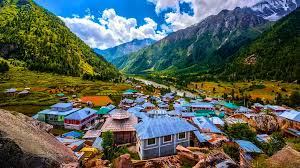
🧠 Travel Tips and Precautions
-
Acclimatize properly: Don’t rush, especially on Manali route
-
Start early each day: Roads are prone to landslides post-noon
-
Fuel up whenever possible: Petrol pumps are rare
-
Carry cash: ATMs are not reliable
-
Travel with a paper map: Network is patchy
📸 Photography in Spiti
Every turn in Spiti looks like a painting. Some photo-worthy spots:
-
Key Monastery at sunrise
-
Fossil hunting in Langza
-
Milky Way over Komic
-
Prayer flags fluttering at mountain passes
If you’re into astro-photography, Spiti is a dream come true.
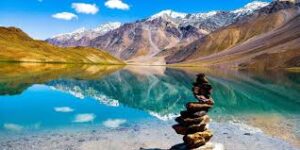
🧘 Personal Reflection – What Spiti Taught Me
This trip to Spiti wasn’t just about sightseeing. It was about letting go, listening to silence, and feeling small in the presence of nature.
There’s something transformative about being in a land where life is tough but simple, where people have little but give so much, and where the sky feels closer to the soul.
Spiti taught me:
-
The value of stillness
-
The power of simplicity
-
That nature is not a place to visit, but a home to return to
🌄 Conclusion – A Journey Beyond Roads
Spiti Valley is not your typical hill station getaway. It’s for those who seek adventure, meaning, and connection. The altitude may leave you breathless, but so will the raw beauty and kindness of this land.
If you ever find yourself craving mountains, silence, stars, and spiritual depth, pack your bags and head to Spiti. It’s not just a trip — it’s a journey to the soul.
